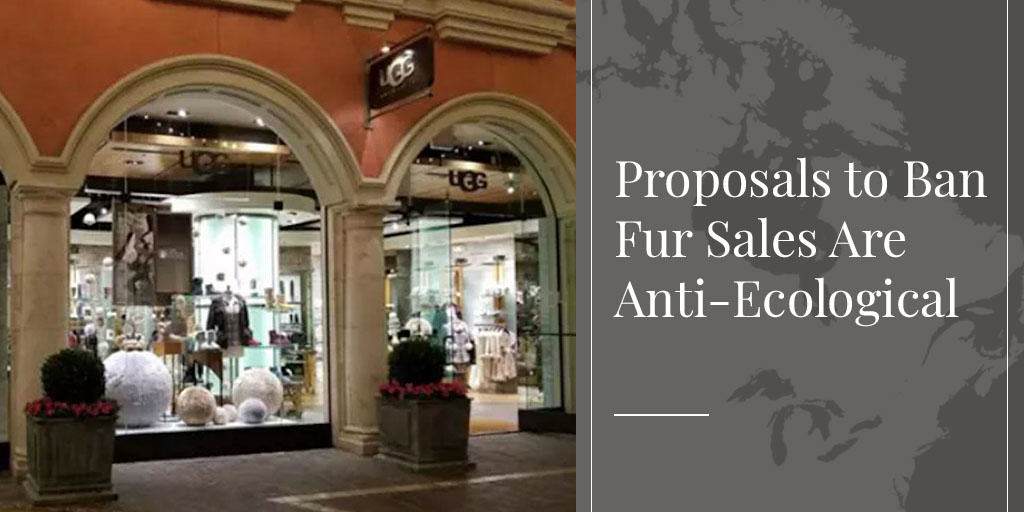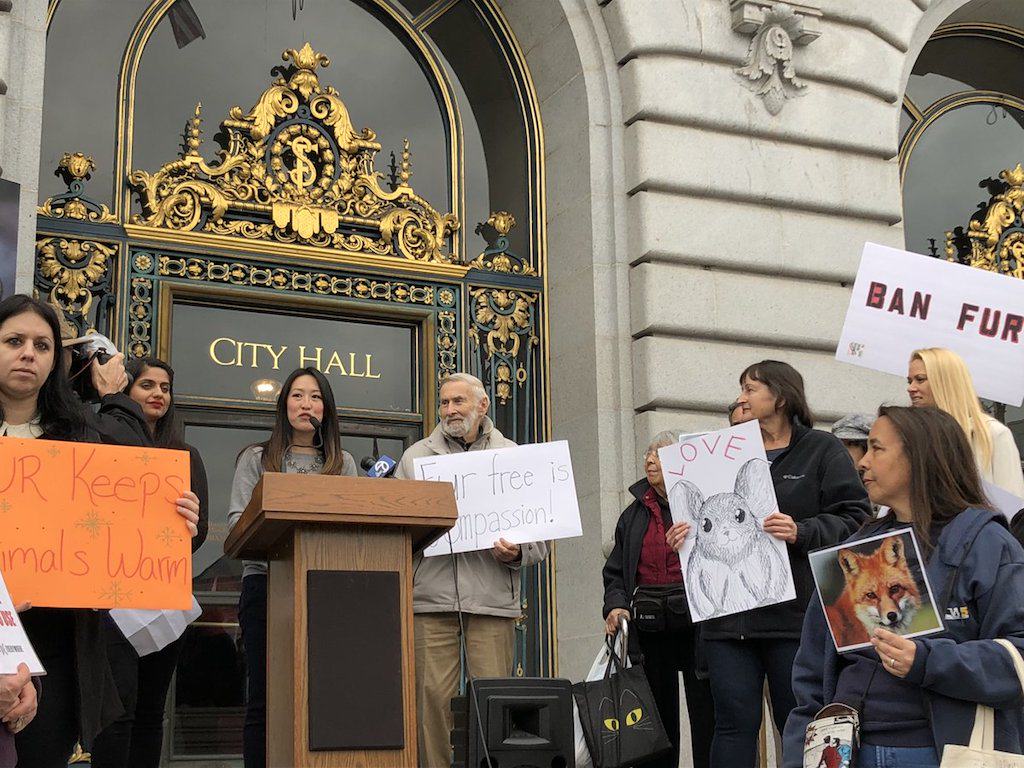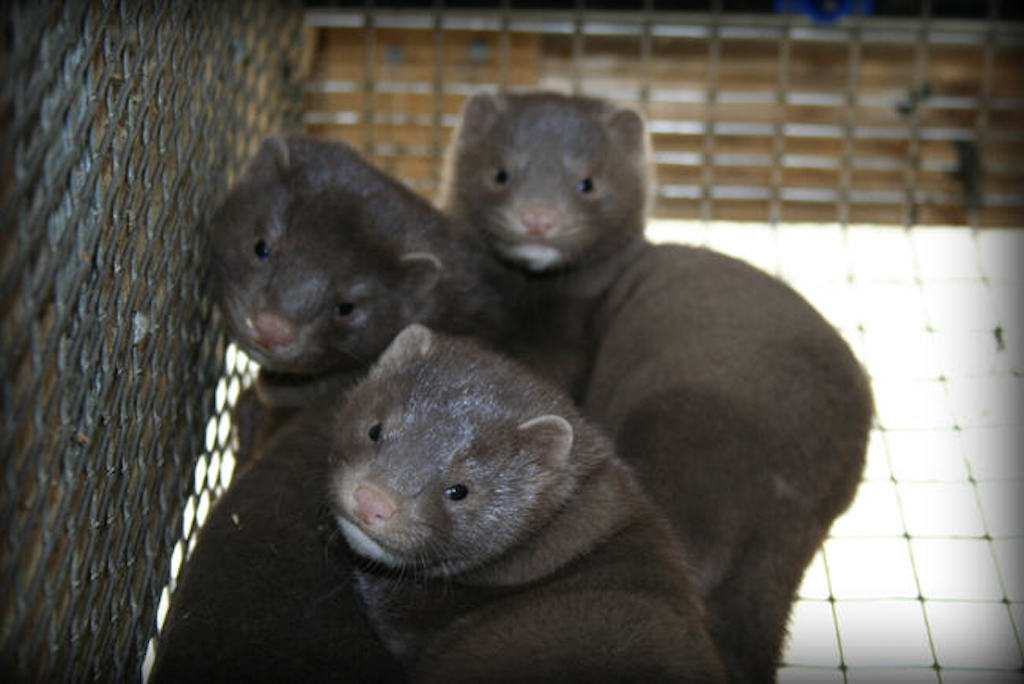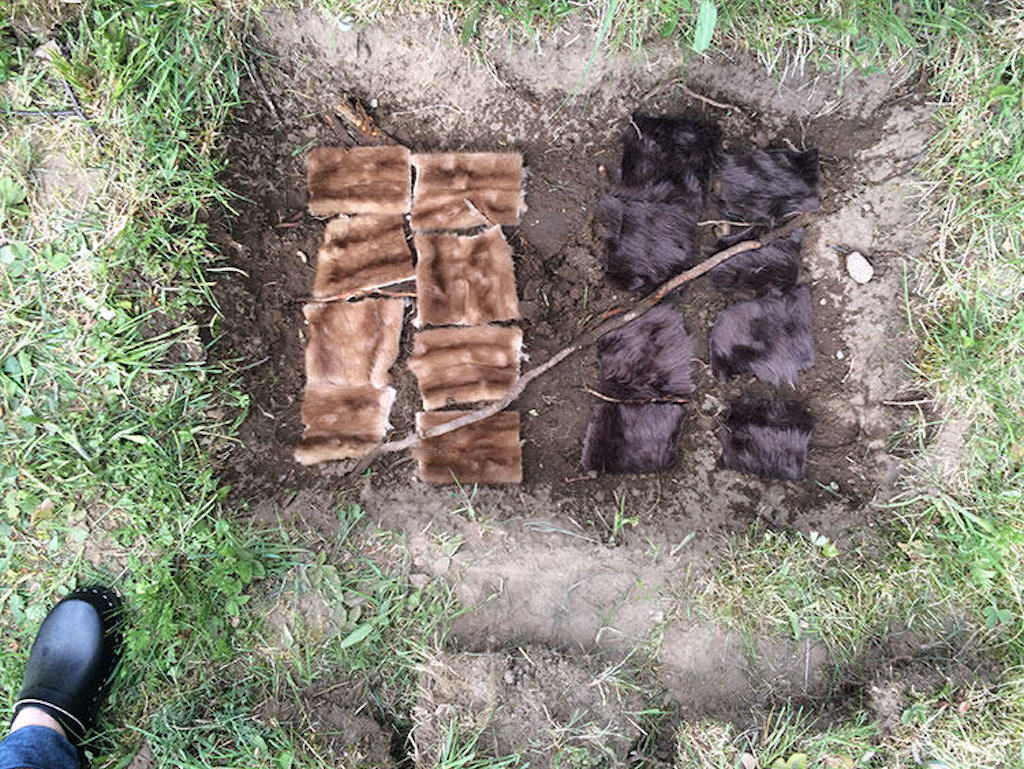
After pressuring a number of designer brands to stop using fur in their collections, animal activist groups that seek to impose a vegan lifestyle on everyone are now lobbying politicians to ban fur sales in San Francisco, Los Angeles and several other cities.
While a few big brands did recently announce that they’d be dropping fur – causing much excitement in activist circles – about 70 percent of top designers were still showing fur in their most recent Fall/Winter collections.
Fur “bans” are equally illusory. Vegan activists love to cite West Hollywood as the first US town to declare fur sales verbotten, but they neglect to mention that the sale of wild fur apparel and accessories remains completely legal there. In fact, a California court has determined that municipalities cannot ban the sale of wild furs even if they want to, because wildlife management is under state jurisdiction. Meanwhile, the “fur ban” proposed for San Francisco would also exempt sheepskin because, well, I guess they like their Uggs in California.

More important than this hypocrisy, however, is the troublesome reality that anti-fur campaigning actually works against environmental sustainability at a time when this is becoming a societal priority – especially in California.
The sustainable use of renewable natural resources is a keystone of conservation policy, as promoted by the International Union for Conservation of Nature (IUCN). And, guess what? The modern fur trade is, in fact, an excellent example of the responsible and sustainable use of nature. This is the story that animal activists don’t want the public to hear.
SEE ALSO: Fur is a sustainable natural resource.
The truth: Wild furs are taken from the naturally-produced surpluses of abundant furbearer populations, never from endangered species. This is assured by state, national and international regulations.
The truth: Some wild furbearers would have to be culled even if we didn’t use fur. Coyotes are the number one predator of lambs and calves, and are now attacking pet dogs and cats – and sometimes even people – in cities across North America. Raccoons, foxes and coyotes must be controlled to protect ground-nesting birds and endangered sea turtle eggs, and to prevent the spread of rabies and other dangerous diseases. Overpopulated beavers flood roads, homes, fields and forest habitat. And the list goes on.
So given that we have to cull these animals, surely it is more ethical to use the fur than to throw it away.
SEE ALSO: Is it ethical to produce, buy or wear fur?
Fur Farming – Nothing Is Wasted

But what about farm-raised furbearers, you may ask? Farmed mink are fed left-overs from our own food production – the parts of chickens, pigs and fish that we don’t eat and would otherwise end up in landfills. The mink manure, carcasses and soiled straw bedding are composted to produce valuable organic fertilizers, completing the agricultural nutrient cycle. Nothing is wasted.
Farmed mink also receive excellent nutrition and care; this is the only way to produce the high-quality fur needed to compete in international markets.
SEE ALSO: Facts about fur farming.
Natural Fur vs. Fake Fur

Above all, fur is a natural and long-lasting clothing choice. In this age of fast-fashion, a good mink coat is often worn for 30 years or more. Fur apparel can also be taken apart and completely restyled as fashions change, or recycled into accessories. And after many decades of service your fur can be put into the garden compost where it will biodegrade and return to the soil. This is true environmental sustainability.
The fake furs touted by animal activists, by contrast, are generally made from petroleum, a non-renewable resource, and will not biodegrade. Troubling new research, moreover, is showing that fake furs and other synthetic materials can leach micro-particles of plastic into waterways (and the food chain) every time they are washed. This is not good for animals or nature.
Freedom of Choice Under Threat
The increasing use of fur for trim, accessories, vests and other smaller pieces makes fur more accessible than it has ever been. This may explain the urgency of recent anti-fur campaigning, because if it was true that no one wanted to wear fur anymore – as activists claim – there would be no need to ban fur sales.
Perhaps this is what frustrates animal activists: most people do believe that it is morally acceptable to use animals for food, clothing and other products, so long as this is done responsibly and sustainably.
Question: What do animal activists do when, despite all their propaganda, young designers and consumers continue to choose fur? Answer: They try to take away their right to choose!
And this brings us to another serious problem with recent activist calls for municipal bans on fur sales. No one forces animal activists to wear fur or leather, or to eat meat or use any other animal products. So what makes them think they have the right to impose their personal beliefs on everyone else?
This issue goes far beyond the debate about fur. Most people in North America came here to have the right to make their own decisions. That fundamental freedom should not be taken for granted, or given away lightly, whatever your personal feelings about using fur or other animal products.












These people apparently are lost in the world. They need to read Genesis in the Holy Bible. Our Father created all creatures including wild animals and gave human beings domain over them all for food and clothing. We need to pray for them and their lack of ability to follow God and to except the things he created for us to utilize for food and clothing.
Speaking of Greenpeace, they may learn from some of their errors: many people don’t know that Greenpeace no longer has any policy or campaign against fur. Greenpeace considers itself to be an environmental protection group — and does not consider the production or use of fur to be an environmental problem.
There we go again; without any consideration Greenpeace just about killed a way of life for the Aboriginal People in Canada’s far North and now again some Jack Ass in the US is trying the same. The only people that benefit are those that organize the protest. I don’t care if it’s Greenpeace or Vegans just mind your own business and piss off.